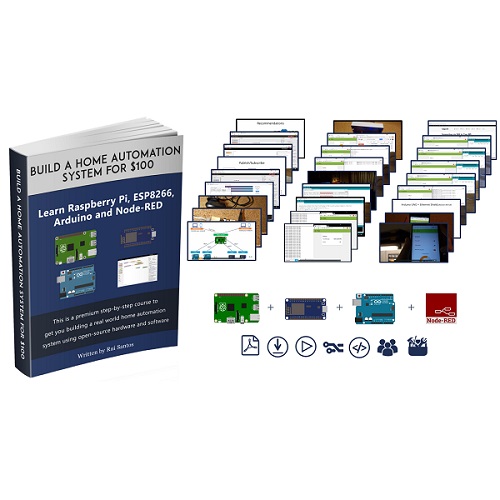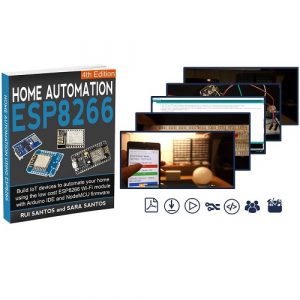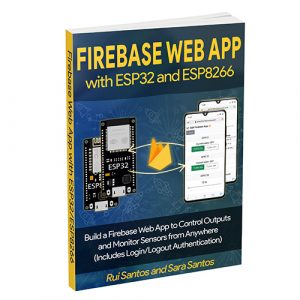Description
This is a premium step-by-step course to get you building a real world home automation system using open-source hardware and software. You’ll learn how to:
- Use Raspberry Pi, ESP8266 and Arduino boards;
- Use Node-RED, Node-RED Dashboard and Linux commands;
- Establish an MQTT connection with multiple devices in your network;
- Control any device, outlet or lamp;
- Read sensor data (temperature, humidity, luminosity and more);
- Trigger events based on sensor data, time and set modes;
- Display your data in gauges and charts;
- Build a smoke and motion detection system with email notifications;
- Make your dashboard password protected and accessible from anywhere in the world;
- And much more (check the full table of contents below).
The course contains 14 Modules, 28 video tutorials/demonstrations, and 3 guides as bonus.
Table of Contents
Module 1 - Getting Started with the Raspberry Pi
Module 2 - Installing the Operating System
Module 3 - Getting started with Node-RED
Module 4 - Experimenting with MQTT
Module 5 - Designing the Graphical User Interface
Module 6 - Connecting the ESP8266
Module 7 - Controlling Outlets/Lamps with the ESP8266
Module 8 - Reading Temperature and Humidity, Detecting Smoke and Motion with the ESP8266
Module 9 - Accessing Node-RED Dashboard From Anywhere in the World
Module 10 - Connecting the Arduino
Module 11 - Controlling Outlets and Reading Sensors with the Arduino
Module 12 - Adding Rules and Triggering Events
Module 13 - Extra 1 - Information that might be useful for this course
Module 14 - Extra 2 - Getting Started with Linux

- How to use SONOFF with Node-RED
- Surveillance Camera with PiCamera and Node-RED
- Ultimate Guide for Arduino Sensors and Modules
discontinued
About the Author

Hey there, I’m Rui Santos, founder of the Random Nerd Tutorials blog. With a focus on simplicity and readability, this course will have you building a complete Home Automation System for under $100 in no time! Together, we will go through the basic concepts and by the end of the course you’ll have a fully functional home automation system that you can use to control and monitor your home from anywhere in the world. Along the way, you'll learn how to use popular boards such as Raspberry Pi, Arduino, and ESP8266.




